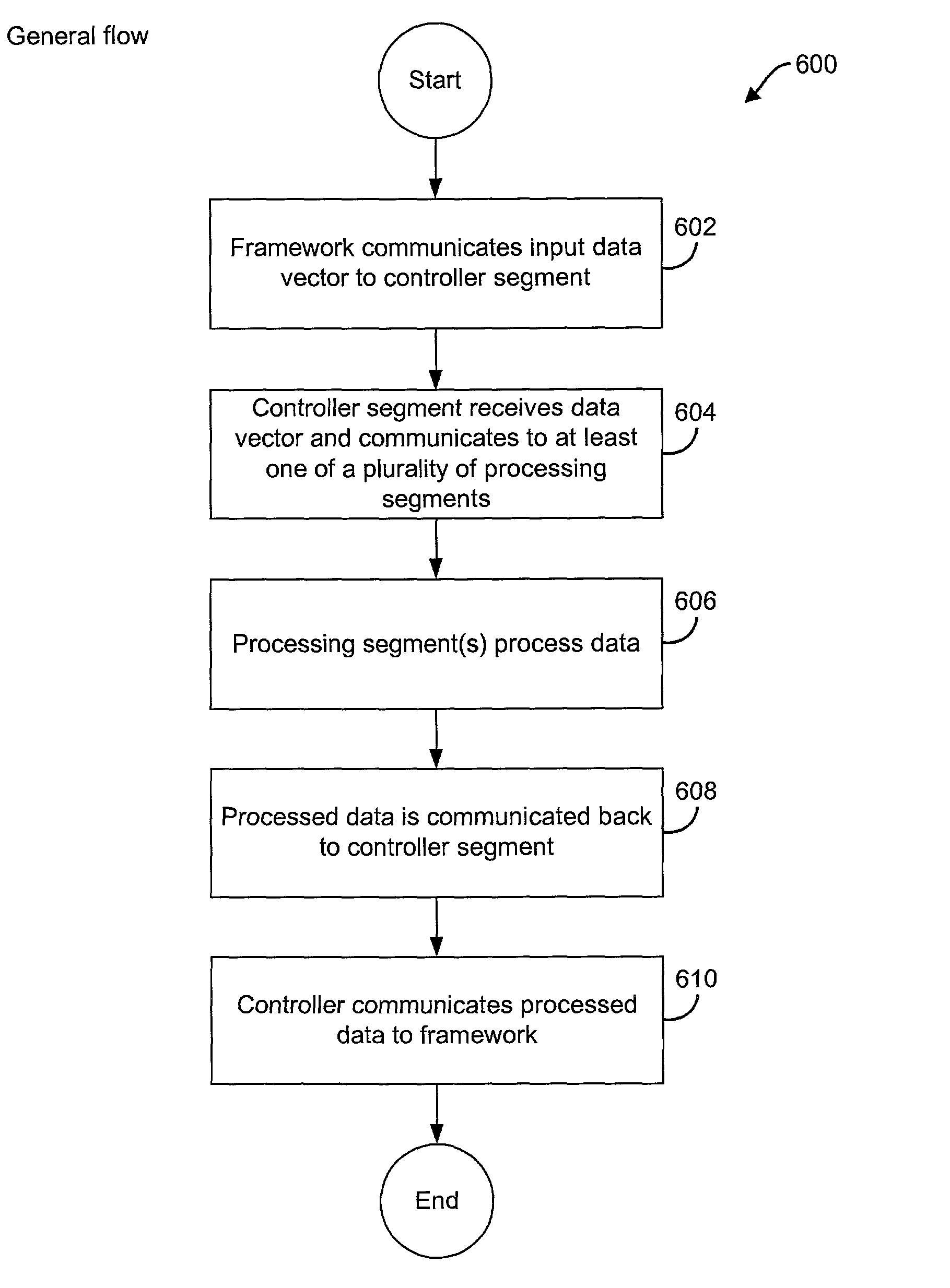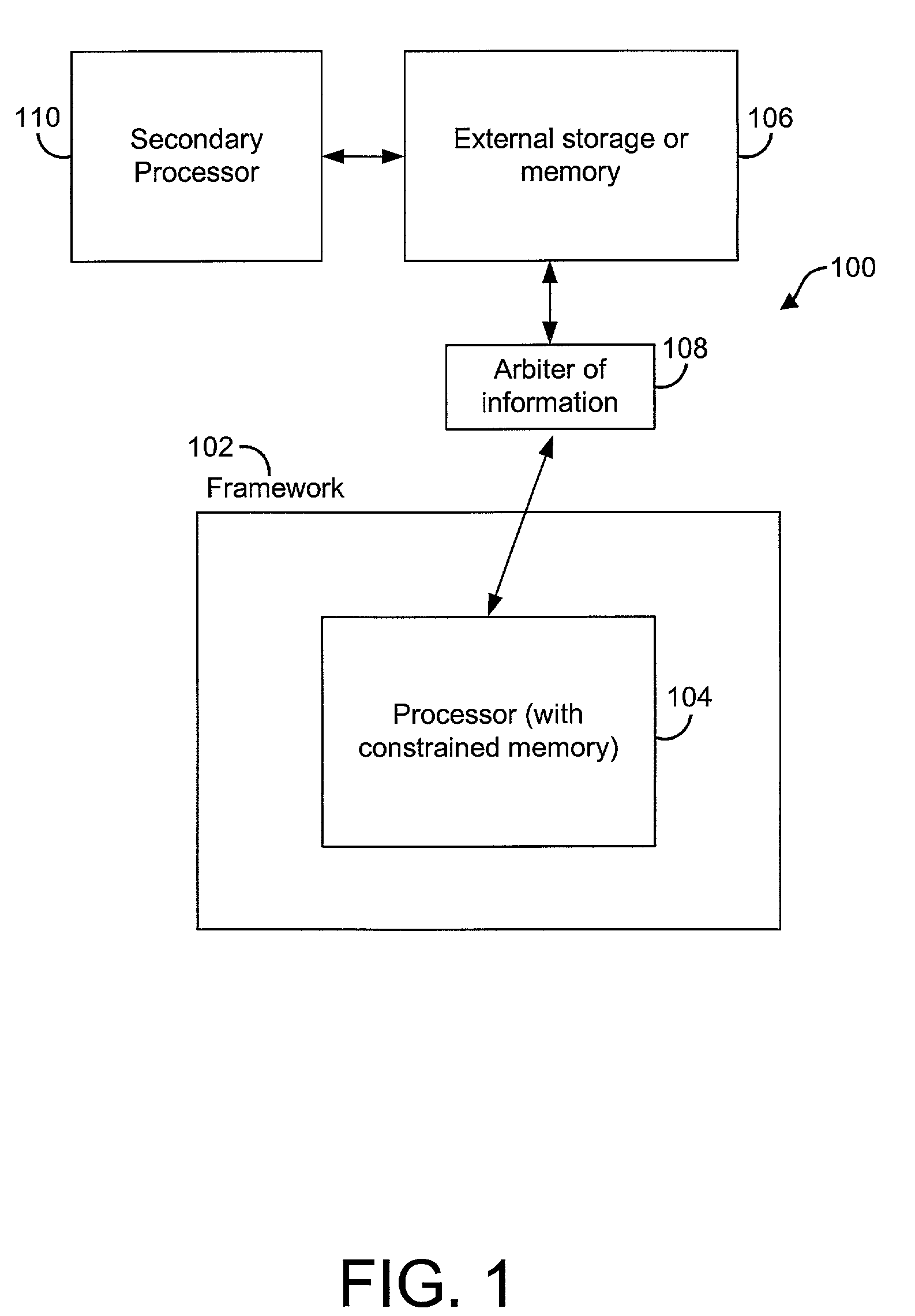Apparatus and method to reduce memory footprints in processor architectures
a processor architecture and memory footprint technology, applied in the direction of memory adressing/allocation/relocation, program loading/initiating, instruments, etc., can solve the problems of requiring more space for storage capacities on the chip, occupying more space on the integrated device than the processing components, and being expensive to produce, so as to reduce the memory footprint, the effect of reducing the cost and reducing the memory footprin
- Summary
- Abstract
- Description
- Claims
- Application Information
AI Technical Summary
Benefits of technology
Problems solved by technology
Method used
Image
Examples
Embodiment Construction
[0045]The present invention is described below in terms of certain preferred embodiments, and representative applications. The example apparatus and processing methods are intended to be used with any communication system that would benefit from having a reduced memory footprint, particularly in a processor intensive device such as a DSP. A reduction in memory on any type of device facilitates reduction of the overall size, cost, and complexity of the device, wherein DSPs are generally associated with more costly memory. Information and data might be stored and accessed from many types of external storage devices. Moreover, the information and data might be stored and processed in an associated processor having lower cost memory. The logical partitioning of the code into controlling pieces, working pieces, and data pieces, can also be advantageously applied to many other hardware architectures and structures.
[0046]Referring to FIG. 1, a generalized block diagram 100 is shown of a fr...
PUM
 Login to View More
Login to View More Abstract
Description
Claims
Application Information
 Login to View More
Login to View More - R&D
- Intellectual Property
- Life Sciences
- Materials
- Tech Scout
- Unparalleled Data Quality
- Higher Quality Content
- 60% Fewer Hallucinations
Browse by: Latest US Patents, China's latest patents, Technical Efficacy Thesaurus, Application Domain, Technology Topic, Popular Technical Reports.
© 2025 PatSnap. All rights reserved.Legal|Privacy policy|Modern Slavery Act Transparency Statement|Sitemap|About US| Contact US: help@patsnap.com



